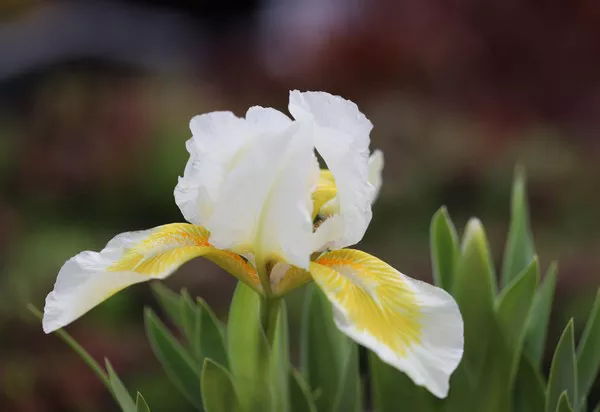Cucumbers are a popular and versatile vegetable in home gardens, prized for their refreshing taste and numerous culinary uses. However, cucumbers are susceptible to a range of pests that can damage the plants and reduce yields. To ensure a bountiful cucumber harvest, it’s essential to implement effective pest protection strategies. In this article, we will explore various methods for safeguarding cucumbers from pests, as well as how to identify common cucumber pests and promote overall cucumber plant health.
1. Identifying Common Cucumber Pests
Cucumber Beetles: These small, striped or spotted beetles are a significant threat to cucumber plants. They feed on leaves, flowers, and fruits, often transmitting bacterial wilt and other diseases.
Aphids: Tiny, soft-bodied insects that cluster on the undersides of leaves, aphids can sap the nutrients from cucumber plants and cause wilting.
Spider Mites: These minuscule arachnids suck the sap from cucumber leaves, leading to discoloration, stippling, and reduced photosynthesis.
Squash Bugs: While they primarily target squash plants, squash bugs can also damage cucumber plants by piercing the stems and sucking sap.
2. Implementing Preventive Measures
Site Selection: Choose a sunny location with well-draining soil for your cucumber patch. Proper sunlight and soil conditions promote strong, healthy cucumber plants that are more resilient to pest attacks.
Healthy Seedlings: Start with healthy cucumber seedlings from reputable sources. Healthy plants have a better chance of fending off pests and diseases.
Crop Rotation: Avoid planting cucumbers in the same spot year after year. Rotate cucumber crops with unrelated plants to disrupt the life cycles of pests and prevent the buildup of soil-borne pathogens.
Companion Planting: Planting companion plants like radishes, dill, and marigolds near cucumber vines can deter some pests. For example, radishes help repel cucumber beetles, while marigolds deter aphids.
3. Monitoring and Early Detection
Regular Inspections: Regularly inspect cucumber plants for signs of pest infestations. Pay close attention to the undersides of leaves and the stems, as pests often hide in these areas.
Yellow Sticky Traps: Hang yellow sticky traps around the cucumber patch to capture flying pests like cucumber beetles and whiteflies.
Handpicking: If you spot a few pests early on, consider handpicking them off the plants. Wear gloves and drop the pests into a container of soapy water to dispose of them.
4. Natural Pest Control
Neem Oil: Neem oil, derived from the neem tree, is an effective organic insecticide. It disrupts the feeding and breeding patterns of pests while posing minimal risk to beneficial insects.
Insecticidal Soap: Made from potassium salts and fatty acids, insecticidal soap targets soft-bodied insects like aphids, spider mites, and whiteflies.
Diatomaceous Earth: Sprinkling diatomaceous earth around cucumber plants creates a barrier that damages the exoskeletons of crawling insects like slugs and squash bugs.
5. Organic Homemade Remedies
Garlic Spray: Blend garlic cloves with water and a small amount of dish soap. Strain the mixture and spray it on cucumber leaves to deter pests.
Chili Pepper Spray: Mix water with chili pepper powder and a few drops of dish soap. Spray this concoction on cucumber leaves to keep pests at bay.
6. Using Row Covers
Cover young cucumber plants with lightweight fabric row covers to physically prevent pests from reaching them. Row covers allow sunlight, air, and water to pass through while acting as a protective barrier.
7. Attracting Beneficial Insects
Encouraging Ladybugs: Ladybugs are natural predators of aphids and other soft-bodied insects. Plant nectar-rich flowers like daisies and yarrow to attract these beneficial insects.
8. Proper Watering and Fertilization
Drip Irrigation: Use drip irrigation to water cucumber plants at the base. Avoid overhead watering, as wet foliage can encourage fungal diseases and attract pests.
Balanced Fertilization: Maintain proper soil fertility with balanced organic fertilizers. Over-fertilization can weaken cucumber plants and make them more susceptible to pests.
Conclusion
By implementing these effective strategies for protecting cucumbers from pests, you can enjoy a bountiful harvest of healthy and delicious cucumbers. Regular monitoring, preventive measures, natural pest control, and promoting beneficial insects all contribute to a thriving cucumber garden. Remember to use organic and eco-friendly methods to preserve the health of your plants, the environment, and the beneficial insects that contribute to a balanced ecosystem. With proper care and attention, you can overcome common cucumber pests and cultivate a successful cucumber garden year after year.


